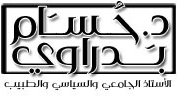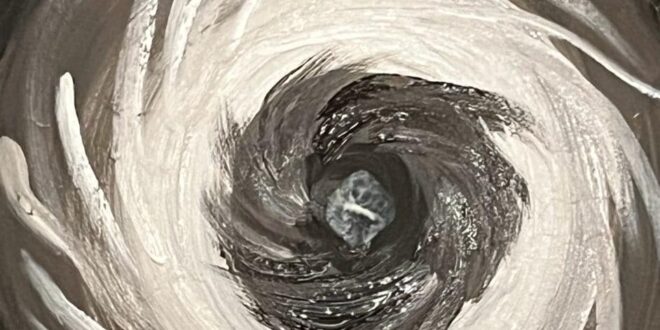The awareness and filling the void
By: Hossam Badrawi
Once, the creative writer Tarek El-Shinnawi said: “The profane words no longer shock anyone, they have enjoyed implicit social immunity due to their extensive circulation. They have completely dominated traditional media after being weaned from social media. They achieve the largest share of followers, and in this era, everyone competes with numbers. It is the thermometer that they follow, rising and falling.”
I commented on this, saying: “Even the news that used to shake the world and overthrow governments have become immune, and do not receive reactions as they used to. For example, the former American president says that ‘we (the United States) created ISIS,’ or the former British Prime Minister Tony Blair says that there were no weapons of mass destruction in Iraq, which was the reason for the invasion of Iraq, the killing of thousands, and the division of the country… And nothing happens, governments do not fall, and people do not even react…
There are many examples of the loss of the impact of truth due to abundance of lies & it’s repetition.
In my youth, when I used to go to Cairo Stadium for football matches, I was very preoccupied by the fact that the spectators would participate in chanting against the referee or a player in obscene words, and they would all be cheering for each other. What was strange was that the people sitting in the VIP boxes, who were senior government officials, were repeating the same obscenities by moving their lips without making a sound. I told myself that there must be a sociological study of the collective behaviour of the audience in uttering obscenities and finding joy in it.
Politically When I analyzed the behavior of the masses in demonstrations, I found that Gustave Le Bon, a French sociologist and anthropologist, who in 1895 conducted a comprehensive study of the collective mind of the crowd and elucidated the existence of a new entity arising from the integration of people as a collective, where when they come together, a magnetic field of the crowd is created due to reasons such as “mimicry,” which is the imitation of the collective behavior to become a part of this collective formation, which seizes the opinions, beliefs, and personal values of each individual in the herd. As he said in one of his quotes: “There are three main processes that affect the behavior of the crowd: anonymity of identity, suggestion, and contagion.”
Anonymity of identity gives a sense of losing personal responsibility, and the person becomes more primitive, emotional, and without constraints, granting a feeling of invincibility.
Contagion means the spread of specific behaviors within the crowd, such as acts of rioting, breaking windows, and throwing stones, where one person initiates an action and others follow, and contrary behaviors may appear, such as sacrificing personal interest for the collective interest.
As for suggestion, it is the mechanism through which contagion is transmitted; strong rhythmic chants make the unconscious element, and the crowd becomes homogeneous, flexible, and receptive to the suggestions of its strongest members, those who lead the march or the crowd, and they can guide and direct the group with their loud voices. Nowadays, they have become trained, and the course of any large demonstration can be significantly determined in advance by their leadership.
If Le Bon were contemporary, he would have added the impact of media and social media on making the ugly acceptable and allowing individuals to feel a sense of social protection without the physical presence of the crowd, leading to the decline of language and words, as the writer describes.
Furthermore, I go a step further and say that creating collective impressions has become a science, making them a reality that does not require proof, and that repeating news through various models leads to the acceptance of what was previously unacceptable.
Writer Amani Fuad also wrote under the title “Who Creates Awareness?” (referring to stable awareness in societies, not the momentary ones). Typically, it is the middle-class educators, university professors, writers, and journalists who transfer ideas from mere elitist value formulated by intellectuals into a tradable value, reaching its realization at the behavioral level. When the culture of that class declines, the general culture also declines because they are the class that maintains sustainable collective awareness, forming it starting from the small family unit to all the layers of society and its segments.
Since the dawn of the “cinema and television” era and the dominance of the culture of viewing, artists such as actors, singers, athletes, and talk show hosts also contribute to creating and shaping awareness.
At the present moment, the awareness of young people is shaped through what is presented on television, in cinema, and through all social media, including sometimes strange youthful models compared to the older generations, but they are attractive to the upcoming generations for their nonconformity to the prevailing traditional norms. These characters shift the stable pattern in the minds about the hero and his general appearance and attire, and they present a strange pattern about how he thinks and acts when facing events, his dreams and aspirations, what he studies, what songs he listens to, how he treats his family, friends, and girlfriend, his way of speaking and the vocabulary he uses, what he owns, whether he belongs to something and feels identified. Well and evil coexist in societies, and that’s natural, but here I observe the concept of verbal and physical violence infringement in daily disagreements and the exaggeration in them, and the possession and brandishing of weapons in confronting those with whom we differ, as if we have ourselves turned into the executive and judicial authority, as if individuals have become the law. It’s as if some young people are reproducing what they see on the screens in dramas.
Furthermore, music and songs also contribute to shaping awareness, as well as the general mood of young people, penetrating their emotions and taste through the melodies and lyrics of the songs they listen to. I always feel that the music of festivals and its vulgar lyrics are mostly capable of creating internal and external conflict among young people. The abrasive nature of this frictional metal music generates a state of uproar and an accompanying random burst of movement in irregular rhythm dances that leaves a latent impact on young people, manifested as movement chaos, a state of general uproar and emotionalism, superficiality, and random handling of life.
As a politician, I thought about what the two writers are saying regarding the chaos in shaping awareness for the Egyptian society, why these models have emerged, are they an expression of the reality of social consciousness or are they designed to shape it? Political experience indicates that any political or emotional vacuum in society will be filled with something. For example, over the years, the state has failed to provide services that are considered rights in healthcare, education, transportation, and housing. What happened? The primary healthcare was once held by the Muslim Brotherhood in the mosques, and they gained the right to access the hearts of Egyptian families. The state has failed over the years to achieve education goals, leading to the spread of private lessons and the division of society into capable classes that learn at exorbitant costs with a loss of identity, and a majority claiming to learn for free while actually paying for education outside the state system, and the announced vision for education is not being implemented for the society.
What happened in the field of transportation where the state was absent in providing or keeping up with the frightening population increase? The tuk-tuk and minibus have filled the void. The void created by the lack of urban planning has been filled by random settlements to the extent that the majority of the population lives in them. Also, the cultural and emotional void is filled by the lyrics of low-class festival songs and non-artistic body-moving music and the production of low-quality films.
And here comes the question, how can we move the society culturally and create a balanced consciousness without a comprehensive vision? I see efforts being made, but most of them lean towards prevention and punishment. Those are negative efforts that do not build or sustain because people have needs that must be met. If the climate created by the government in society does not stimulate the private sector and civil society with declared rules and incentives supported by the state, then any vacuum will be filled with chaos of subpar service providers, and they can’t be blamed, this is what they know. I intentionally avoided discussing the political governance system that is suffering from a vacuum filled now by security and intelligence agencies, with no balance between the presumed constitutional freedoms for political work, and this imbalance creates a void, fearing that it might be filled by the most organized and funded, likely the political Islam groups, or foreign intelligence agents who want to sabotage and ruin the country, as happened in Sudan, Libya, Iraq, and Syria.
Ladies and gentlemen, the festival songs and the decline in the standard of media art are no different from private lessons, random construction, or unlicensed tuk-tuks, and confronting that is not through prevention, punishment, shouting, or criticism, but by creating a climate that allows the society’s energies to work, with incentives to fill the voids created by the beginning of unsustainable inefficiency for over seventy years in building the modern Egyptian civil state. Can we change that? The answer is certainly yes.
 Dr. Hossam Badrawi Official Website
Dr. Hossam Badrawi Official Website


